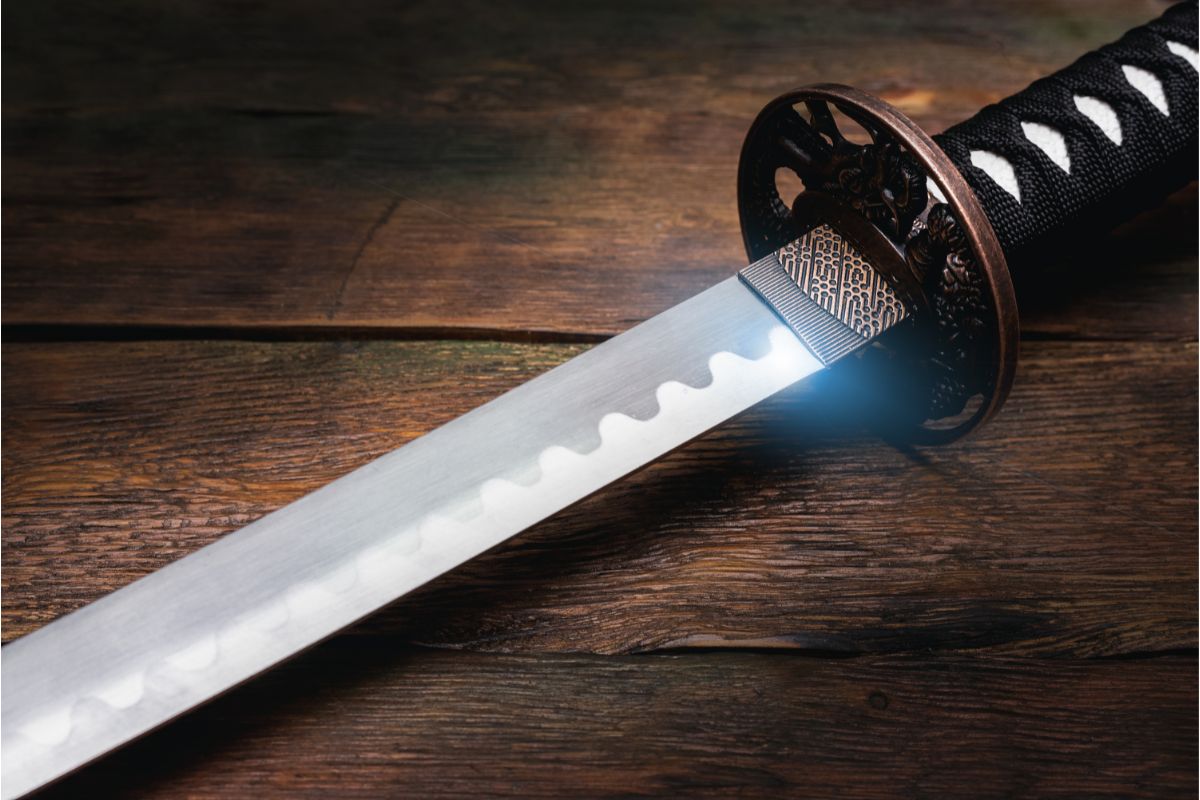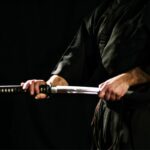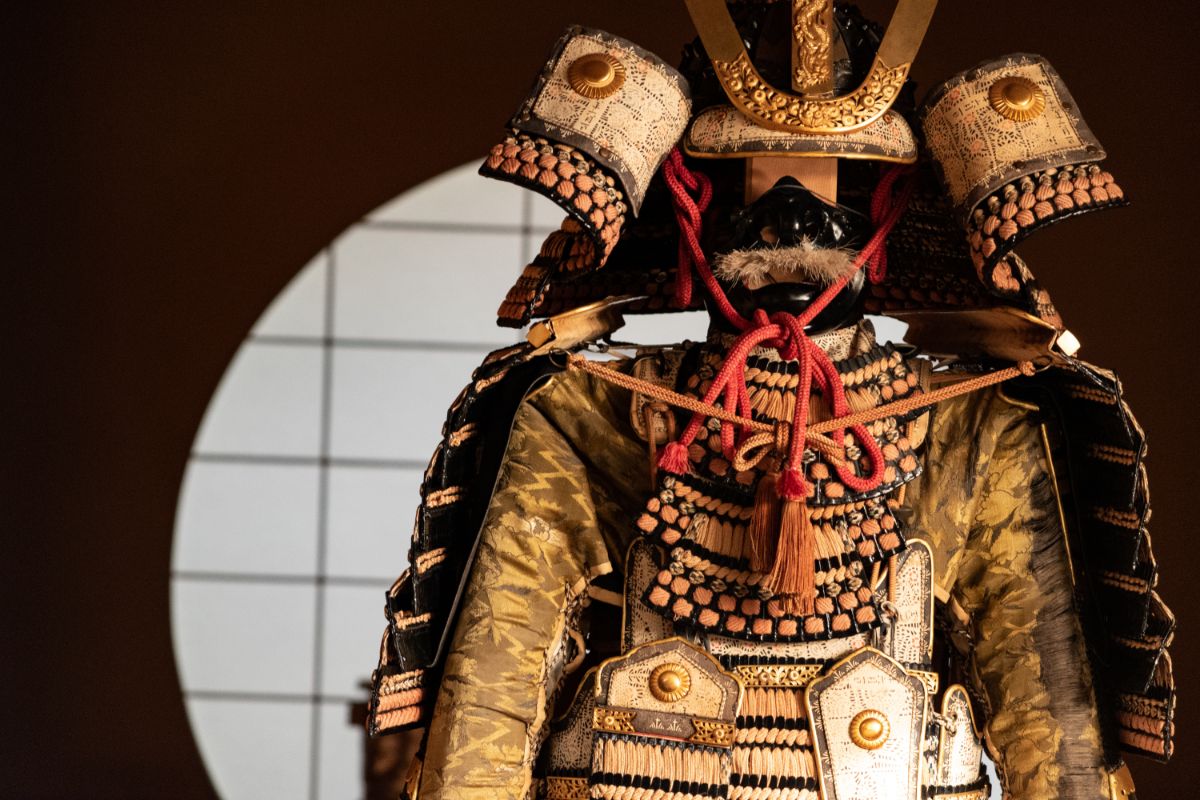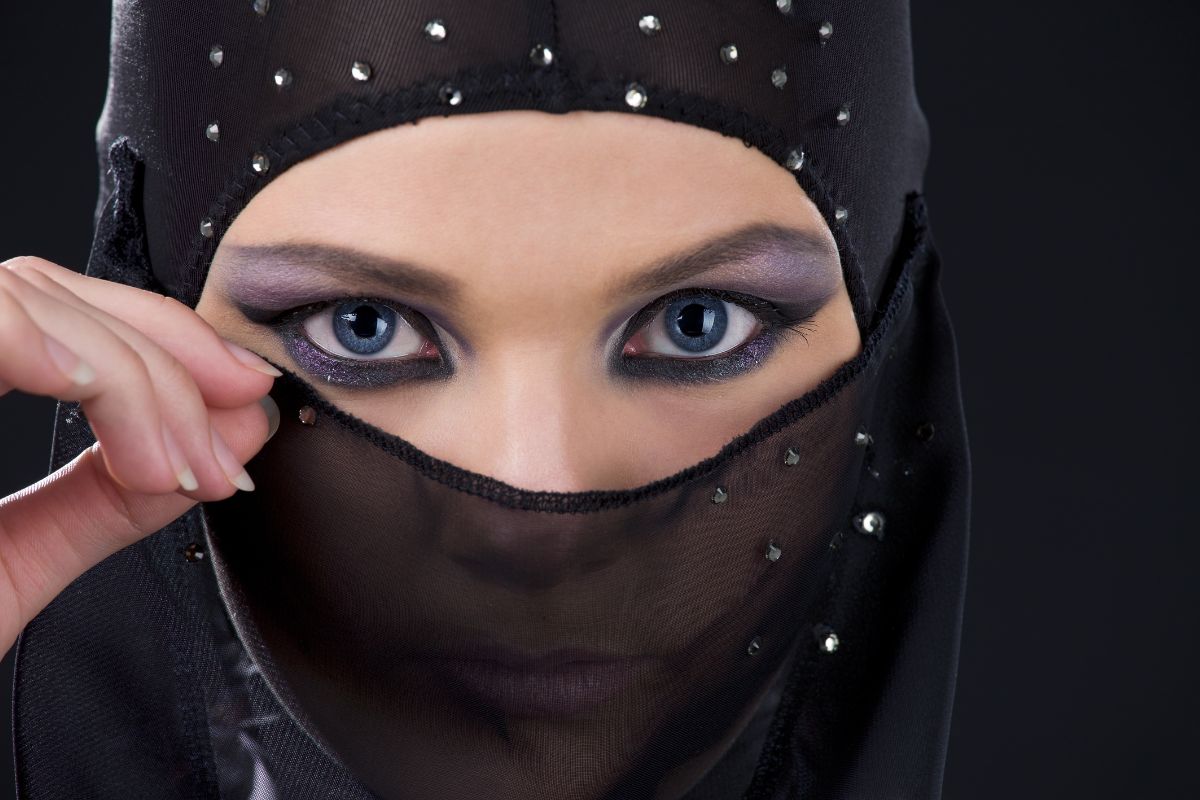Katanas are weapons synonymous with Japan. Many cultural mediums portray characters wielding these iconic weapons. Examples include Marvel’s Deadpool, The Bride in Kill Bill, and DC’s Katana.
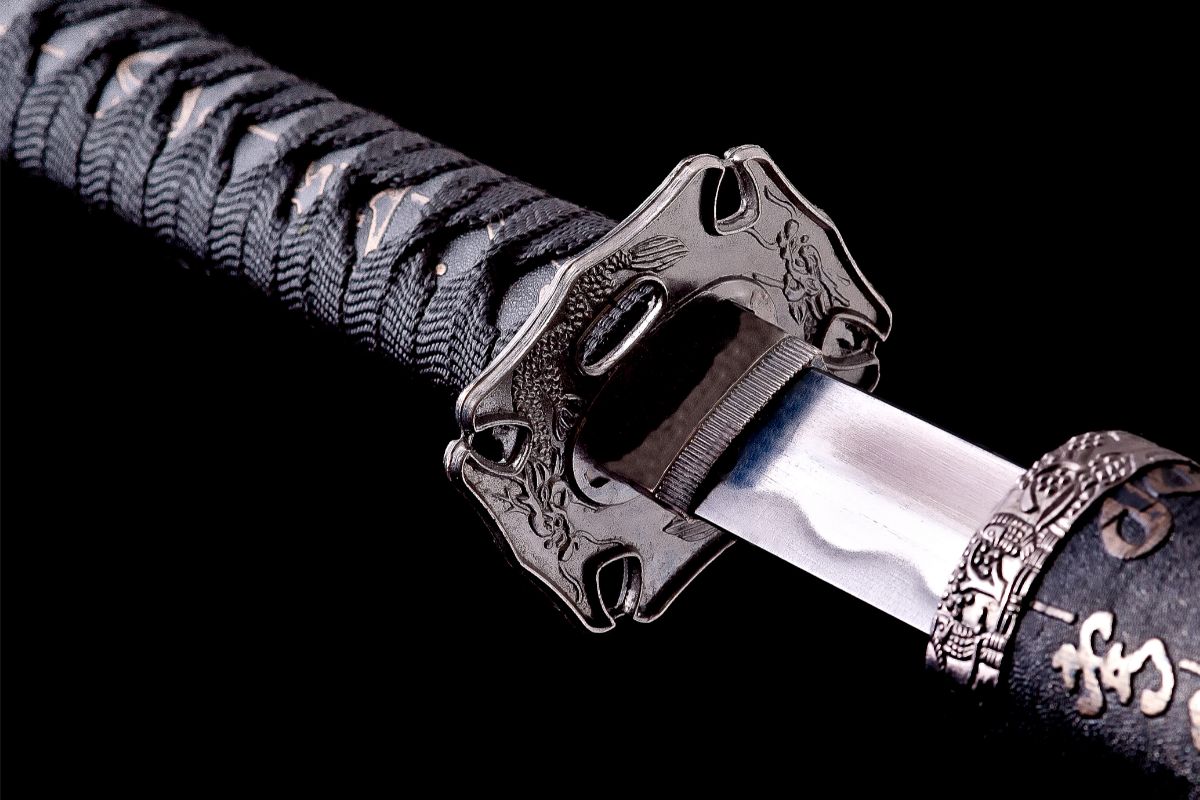
But what are the legal statuses of these weapons? Are they legal in Japan? Continue reading to find out everything you need to know about Japan’s relationship with katanas.
What Are Katanas?
A katana is a type of sword that originates from Japan. The long blades are formed of a single edge and feature a slight curve.
These swords were widely used in feudal Japan by samurai warriors. The katana inspired many different varieties of swords across the world. Katanas were not only sharp, but they were not as prone to being damaged as other swords.
Katanas have been around for centuries. They are believed to have been created during the 1300s. Used for a long time as weapons, many people now consider katanas to be a form of art.
This is due to their importance in Japanese history and the high levels of craftsmanship that go into their creation. As a result, these swords are commonly mounted and displayed.
Are Katanas Legal?
Katanas are legal in Japan. However, they must first be registered. Specifically, you need to register the katana with the Nihon Token Kai, the name of the Japanese Sword Association.
This group is dedicated to proving that swords can have cultural and historical value. Yet, they should also be registered to keep people safe.
Though you can own a katana, it is illegal to wield them as a weapon. A person could not legally walk around a city with their katana, as this would be incredibly dangerous.
Police officers would likely attempt to stop you. As with any type of sword, katanas can cause a lot of harm.
Therefore, though katanas are legal, you have to register them.
Have Unregistered Katanas Ever Been Legal?
Yes, katanas were once legal. This was during the period in which samurai formed a social class, lasting from the feudal period to the Edo period.
These swords benefitted samurais, as combat tended to be in close range.
The Age Of The Samurai
Samurai warriors would don the sword on their sashes. While many Halloween costumes of samurais are inaccurate, this is a minor detail that many costumes manage to get correct.
Thus, the katana could smoothly be drawn during combat, effectively allowing the samurai to cut their opponent with minimal actions.
Of course, how samurais wore katanas varied depending on the period and the individual.
But many found this placement to be strategically advantageous, as it allowed the samurai to quickly and cleanly injure their adversary.
After centuries of power and influence, the presence of the samurai dwindled. By the 1870s, very few samurais (see also ‘The Age Of The Samurai: 1185-1868‘) still existed. Eventually, this social group was phased out of Japanese society.
They were even stripped of their right to don katanas publicly. Before this, samurais could wield these swords without restrictions.
Post WW2
After the end of World War 2, swords became less popular in Japan. From 1945, sword manufacturing became illegal. As a consequence, many pre-existing swords, including katanas, were destroyed.
Thankfully, this law changed so that historical swords could be preserved. Plus, it allowed sword makers to earn money. In 1953, laws once again made the construction of swords legal.
For the sake of safety, there were restrictions placed on the forging of swords. These restrictions were:
- Swords had to be registered with the Japanese government.
- Licensed swordsmiths are the only people who can forge swords.
- Every swordsmith can make a maximum of just two longswords per month.
- Swordsmiths must first undergo an apprenticeship, which usually takes three years to complete.
Nowadays, katanas are primarily kept as ornaments in museums and establishments dedicated to preserving Japan’s rich cultural heritage.
If you do a museum tour in Japan, you might see a katana on display next to a suit of samurai armor.
These laws remain in place today.
What Happens If You Have An Unlicensed Katana?
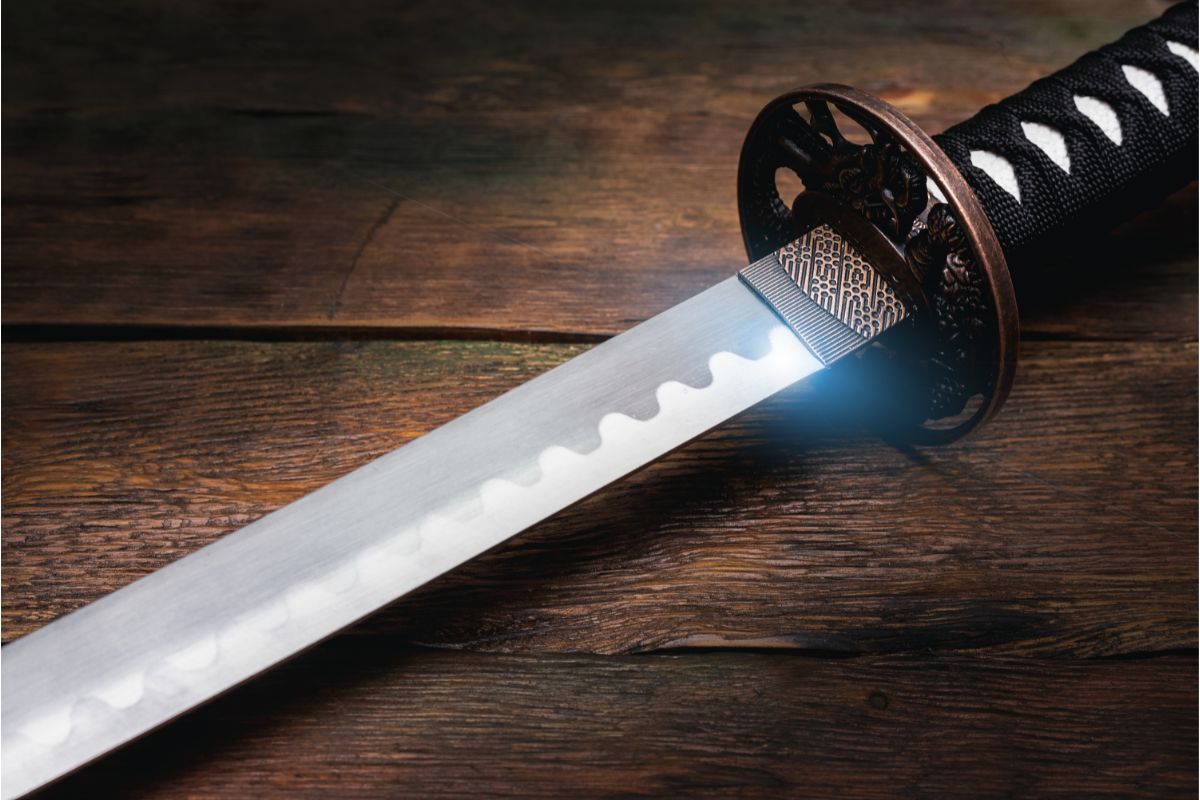
As mentioned, katanas are legal as long as they have been licensed.
If you are found in possession of an unlicensed katana, it will likely be confiscated from you. You may be charged, namely with the offense of possessing an unlicensed sword.
This is part of the Swords and Firearms Possession Control Law of 1958. As you may have guessed, this law is designed to limit the use of guns and swords.
If you break this law, you could face jail time for as long as ten years. To avoid this, you should fill in all the necessary paperwork for the possession of a katana, firearm, or any other form of weapon.
This law has proven effective, as very few people living in Japan own firearms. Gun crimes are rarely committed in the country, resulting in it being a safe place to live.
Even the Japanese police, who can use guns, rarely resort to them. However, the Japanese police are not permitted to use swords.
Frequently Asked Questions
Are Katanas Easy To Break?
No, katanas are quite strong. In the ancient world, katanas were considered one of the strongest swords. Nowadays, katanas do not compare as well to more modern swords.
Yet, they are still fairly durable. Like any sword, katanas will become dull after repeated use, with chips eventually forming.
What Are Katanas Constructed From?
These swords can be forged from a few different materials, but steel is commonly used. Traditionally, they would be made from a pure form of steel, dubbed by the Japanese as jewel steel.
Can Katanas Cut Through Armor?
No. Though katanas are sharp, they would be pretty useless against plate armor. The majority of swords are ineffective against this tough armor.
Instead, other weapons would be used to damage the wearer internally, thus weakening them.
Final Thoughts
Japan’s history with the katana is fascinating. While it is sad that these swords have become less common, the tough restrictions surrounding their creation in Japan are justified.
After all, though katanas may look cool and hold cultural weight, they are still weapons. Therefore, it should be up to fictional characters to wield katanas, not real people!
- 16 Best Websites To Watch Japanese Movies With English Subtitles - May 11, 2023
- Is ZIPAIR The Best Airline For Traveling To Japan? - May 11, 2023
- Ryu Murakami Vs Haruki Murakami – Which One Should You Read? - May 11, 2023

